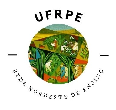Banca de QUALIFICAÇÃO: ALZIRA CARLA DE OLIVEIRA DIAS
Uma banca de QUALIFICAÇÃO de DOUTORADO foi cadastrada pelo programa.STUDENT : ALZIRA CARLA DE OLIVEIRA DIAS
DATE: 05/12/2023
TIME: 14:30
LOCAL: Google Meet
TITLE:
BIOCHEMISTRY IN COMICS: A STORY ABOUT GLUCOSE REGULATION IN TEACHER TRAINING
KEY WORDS:
Biochemistry; Comics; Semiotics
PAGES: 203
BIG AREA: Ciências Humanas
AREA: Educação
SUBÁREA: Ensino-Aprendizagem
SUMMARY:
The teaching of Biochemistry has posed a formidable challenge, often regarded as
complex and difficult to understand by students and teachers. In this context, the
research proposes an approach based on the use and construction of comic strips as a
didactic-pedagogical tool to promote the apprehension of biochemical concepts, with a
focus on the theme of blood glucose regulation. The research adopts a qualitative
methodology and is divided into four phases: a bibliographical survey, a theoretical
approach to the central theme and a workshop on comics, the process of creating comic
narratives, and the surveillance of teachers in the classroom. Lev Semyonovich
Vygotsky's theory of historical-cultural thinking plays a fundamental role in the
theoretical foundation of this study. It emphasizes the importance of social interaction
and symbolic mediation in learning, highlighting that subjects actively shape the forces
that transform them. In this context, scientific concepts become instruments of thougth
when they cease to be distant and estrange, becoming part of the student’s subjectivity.
The research also employs a semiotic approach, using Kress and van Leeuwen's Visual
Design Grammar theory to analyze the comics developed specifically for this study.
Biology teachers in continuing education will be involved in the process of creating and
analyzing these comics, employing techniques for constructing and recognizing signs.
The central theme is the blood glycemic regulation, exploring the intrinsic aspects of
our society. This research aims to provide in an approach that promotes meaningful
learning through comics’ narratives. Furthermore, semiotic analysis contributes to a
deeper comprehension of how visual signs can facilitate the construction of biochemical
concepts. This study represents an opportunity to explore the intersection between
biology, semiotics, teacher training, stimulating interest in innovation in science
teaching.
COMMITTEE MEMBERS:
Presidente - ANA MARIA DOS ANJOS CARNEIRO LEAO
Interna - CARMEN ROSELAINE DE OLIVEIRA FARIAS
Interno - ***.894.644-** - JOAO ROBERTO RATIS TENORIO DA SILVA - UFPE
Externa ao Programa - 2582053 - JANAINA DE ALBUQUERQUE COUTO - UFRPEExterno à Instituição - EDSON JOSÉ WARTA - UFS




